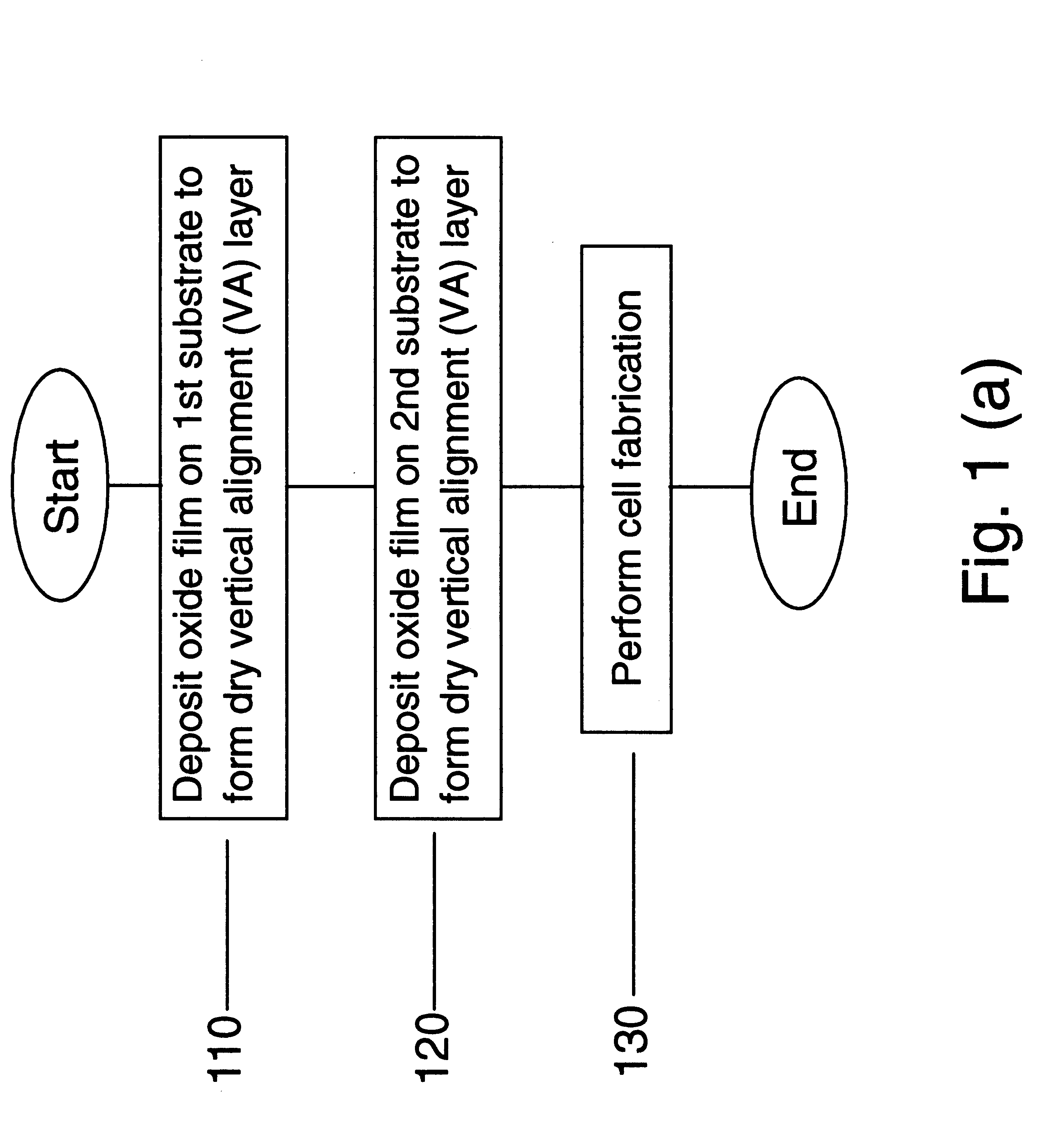Vertical aligned liquid crystal display and method using dry deposited alignment layer films
- Summary
- Abstract
- Description
- Claims
- Application Information
AI Technical Summary
Benefits of technology
Problems solved by technology
Method used
Image
Examples
first preferred embodiment
Truly Vertical Alignment
Turning to FIG. 1A, regarding a method 100 for producing a structure having truly vertical alignment (e.g., almost 90.degree.), in step 110, a substrate 150 (e.g., a glass substrate, quartz substrate, silicon-based substrate, plastic substrate, transparent substrate, reflective substrate, TFT substrate, any of these substrates with driving circuitry on it or any other suitable substrate) is deposited with a dry deposited vertical alignment film by one of the following deposition methods.
That is, a first deposition method includes a normal direction e-beam evaporation of silicon oxide film, in which the evaporant is SiO.sub.2, and the electron gun ("E gun") voltage is 7 kev. The preferred angle of the evaporant source to the substrate surface is 90.degree..+-.5.degree., and the deposition rate is 3 .ANG. / s. Preferably, the deposition pressure is approximately 1.5 e-6 torr. During deposition, the substrate temperature is at room temperature. The film thickness ...
second preferred embodiment
FIGS. 3A-3B show the structure of the conventional rectangular LCD cell of a TFT-LCD panel. FIG. 3A is a top view and FIG. 3B is a side view along A-A' cross-section. For simplicity, only the pixel electrode 301, and the gate and data bus lines, respectively, are shown. The TFT devices, the top plate electrode and color filter are not shown.
The top plate electrode (not shown) preferably is a continuous Indium tin oxide (I TO) electrode. In FIG. 3A, the polyimide (homogeneous or homeotropic) alignment layers (not shown) are used as liquid crystal alignment layers. This design is a single domain design which has a narrow viewing angle.
FIGS. 4A-4B illustrate a LCD cell design according to the second embodiment of the present invention. The structure of FIGS. 4A-4B is the same as that of FIGS. 3A-3B except that there is a polymer wall 401 (ridge) located on the top plate electrode in the middle of each pixel, and the dry vertical alignment film (not shown in FIG. 4a) which covers both t...
PUM
 Login to View More
Login to View More Abstract
Description
Claims
Application Information
 Login to View More
Login to View More - R&D
- Intellectual Property
- Life Sciences
- Materials
- Tech Scout
- Unparalleled Data Quality
- Higher Quality Content
- 60% Fewer Hallucinations
Browse by: Latest US Patents, China's latest patents, Technical Efficacy Thesaurus, Application Domain, Technology Topic, Popular Technical Reports.
© 2025 PatSnap. All rights reserved.Legal|Privacy policy|Modern Slavery Act Transparency Statement|Sitemap|About US| Contact US: help@patsnap.com



